 Introduction |
Scanography by Marsha Tudor |
Scanography by Christian Staebler |
Contacts, links & resources
Introduction |
Scanography by Marsha Tudor |
Scanography by Christian Staebler |
Contacts, links & resources
Scanner Photography
About My Work-Process
by Marsha Tudor
About My Work-Process
by Marsha Tudor
|
From the first day someone accidentally photocopied their hand while trying to copy a document it became inevitable that people would start using copiers and other equipment intended for flat surface to reproduce various body parts and other 3-dimensional objects. The web is flooded with such images that harken back to a 5 year-old's antics. Happily, along with the random body part images are some serious artistic efforts that make use of technology unavailable even just a few years ago. These are exciting times.
|
||||||
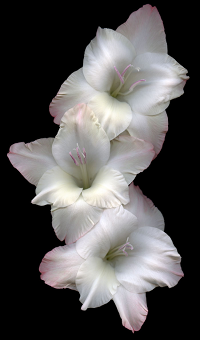 (Please click to enlarge) The first image was exposed using the "Skin tones", which gives a fairly traditional photographic look, but with a creamy softness to it. Yum! |
Scanners offer much more sophistication than photo-copiers, but the idea is the same… a flat surface gets digitized. As photographers know well, generally that flat surface is a slide or negative. Film photographers moving from analog to the digital world willingly or reluctantly scan their images to be able to manipulate and reproduce. My background is fine art, not photography so I approach the medium a bit differently than photographers who explore scanner photography. But even with a fairly free-wheeling artsy approach, some technical stuff is useful.
Scanners have much higher resolution than cameras because they are expressly made for enlarging small slides or film. This happenstance allows them to be used to capture images directly with great clarity that can be enlarged to sizes much bigger than traditional photography without loss of detail. It is thrilling to have such amazing resolution available, but sadly it comes also with an extremely shallow depth of field. The fixed focal point is aimed just above the glass and the light beam which illuminates the image does not penetrate much beyond glass. So along with diminished focus, there is a drop-off of light almost immediately above the glass. It is the tension among these extremes that makes scanner photography challenging, and of course that is half the fun. Like so many other digital processes, entry is easy, but mastery remains only for the dedicated. Success on the very first scan hopefully encourages one to stick around and discover what a moving light source might reveal. |
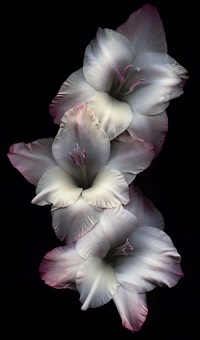 (Please click to enlarge) This second image was exposed using the "HDR" setting, which moves into a more mysterious range that gives an entirely different feel to the image. |
||||
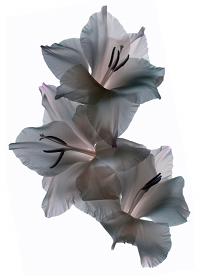 (Please click to enlarge) The last image in this series, was taken of the same plant material, but by using the transparency lid and using positive transparency option with a "standard" setting the exquisite luminescence is revealed. |
I now use an Epson Perfection V750 with a native resolution of 6400 pixels per inch that replaces my old work horse Epson 4990. With the new scanner, I've begun using SilverFast software. Already I see many new possibilities which I plan to explore methodically over the coming months. On this site is a first sampling of exposures.
It is clear to me that SilverFast software will allow both a much greater control of the image capture and a broader range of expression. I'm primarily using the presets at this point, but once I gain control and understanding of the possibilities, I'm grateful that there are also manual settings for more experimentation. I'm really looking forward to this adventure. |
|||||
|
The next thing that I do in my Process once an image is captured is to edit to clean up the inevitable dust particles that are a constant due to the length of exposure and that fact that in most cases the lid is left open. Flaws in the plant material are also eliminated. It is a time consuming process, but the results are well worth the effort. Here is a capture of Bougainvillea bracts. In the detail you can see the flaws that are unsightly. The edited image is now finished but nor necessarily very interesting. Some images are perfect just the way they are and some beg to be manipulated in Photoshop. I am drawn to botanical material very strongly, but I often wish to push towards abstraction in my work. This particular image was so texturally interesting that I wanted to use it in a way that would focus on the vein structure. |
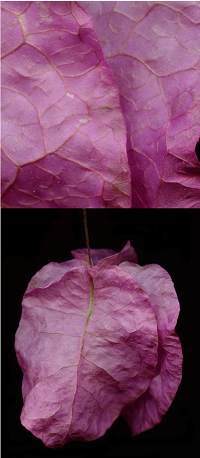 (Please click to enlarge) |
|||||
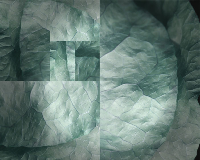 Gnomons Moon 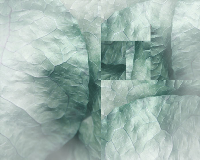 Gnomons Sun
Gnomons Sun(Please click to enlarge) |
A mathematical concept provided the vehicle. Gnomons are geometric shapes that are built by repetitions/divisions of the same shape. A rectangle for example, can be doubled, then those two combined are doubled, then those combined are doubled and so on.
 Here you can find a tutorial PDF by Marsha Tudor, which explains the use of the different SilverFast Auto Adjust Presets in the field of artistic scanner photography: Basic Scanner Photography Using SilverFast Presets Here you can find a tutorial PDF by Marsha Tudor, which explains the use of the different SilverFast Auto Adjust Presets in the field of artistic scanner photography: Basic Scanner Photography Using SilverFast Presets
|
|||||
Introduction | Scanography by Marsha Tudor | Scanography by Christian Staebler | Contacts, links & resources
 English
English Deutsch
Deutsch Français
Français Italiano
Italiano 日本語
日本語 Español
Español Português
Português Russian
Russian Chinese (Simp.)
Chinese (Simp.) Čeština
Čeština Polish (Store only)
Polish (Store only)